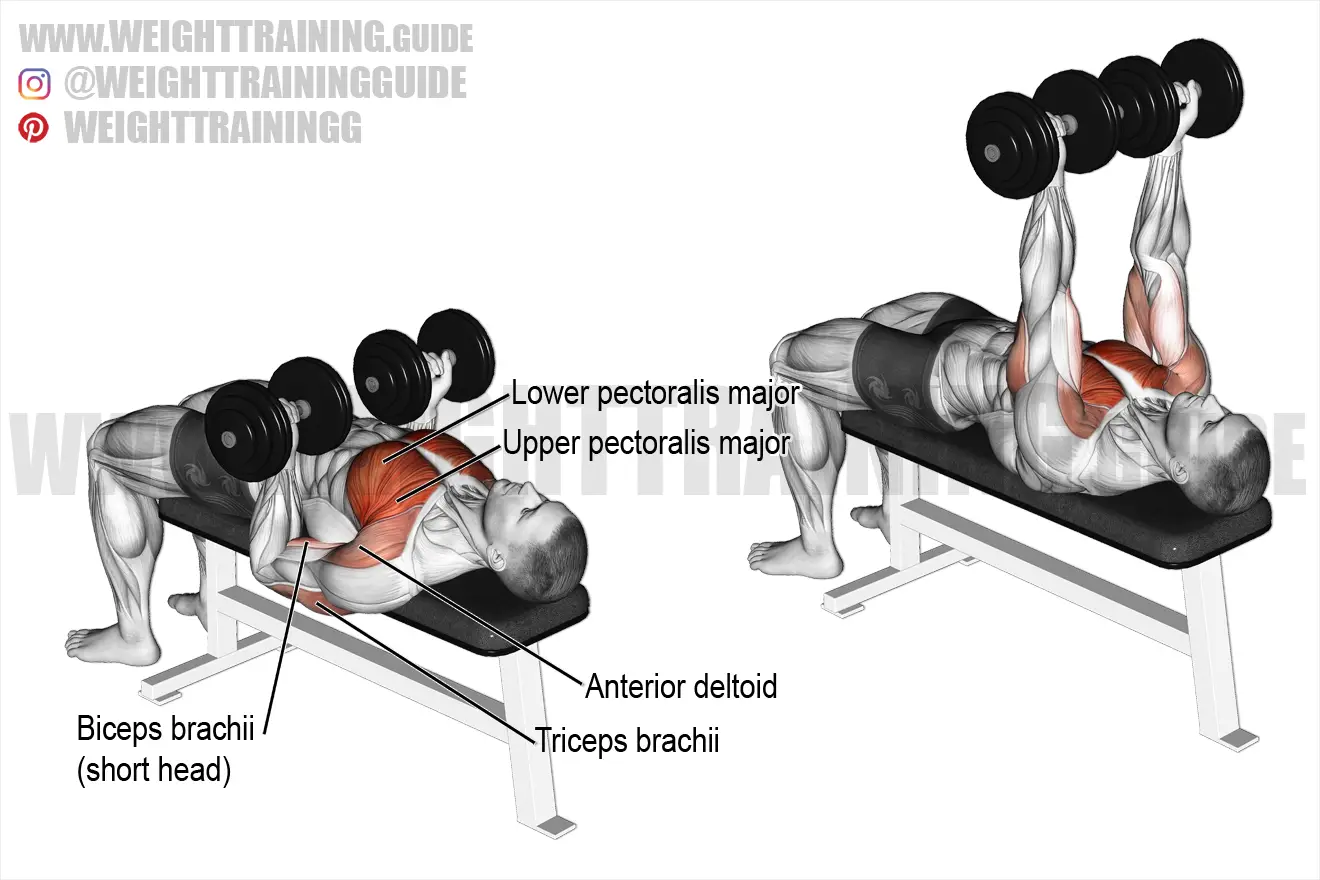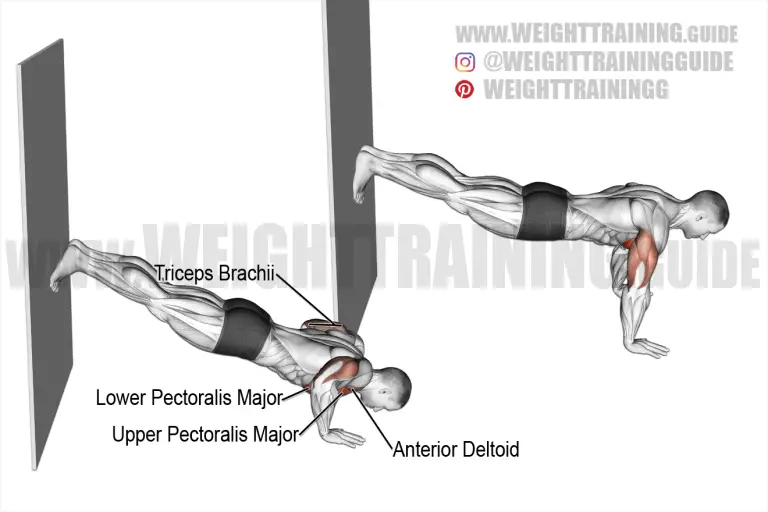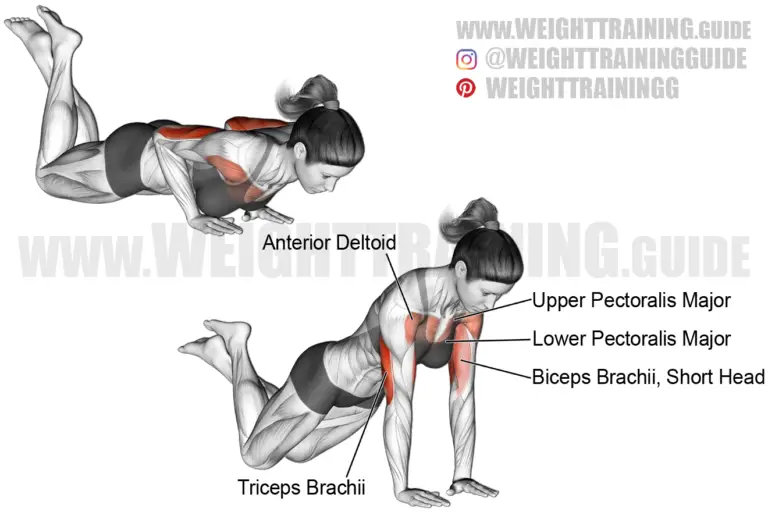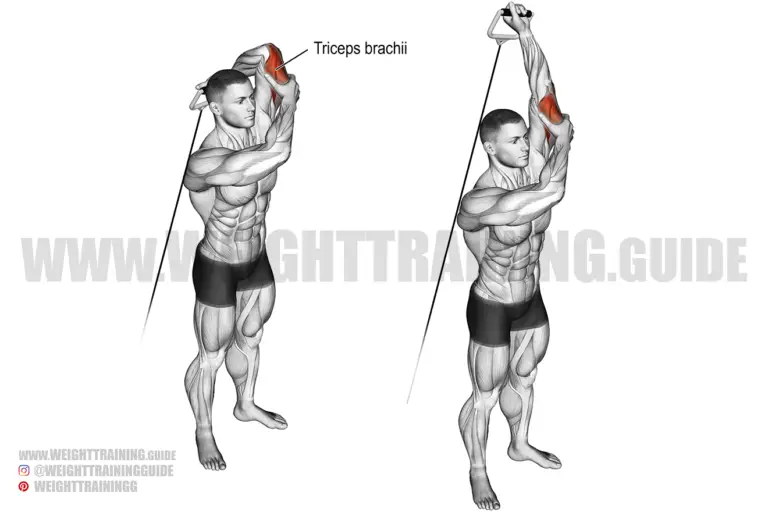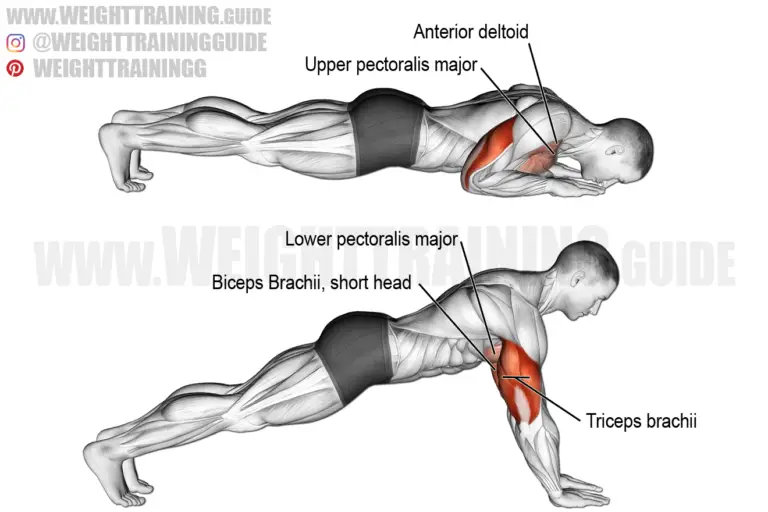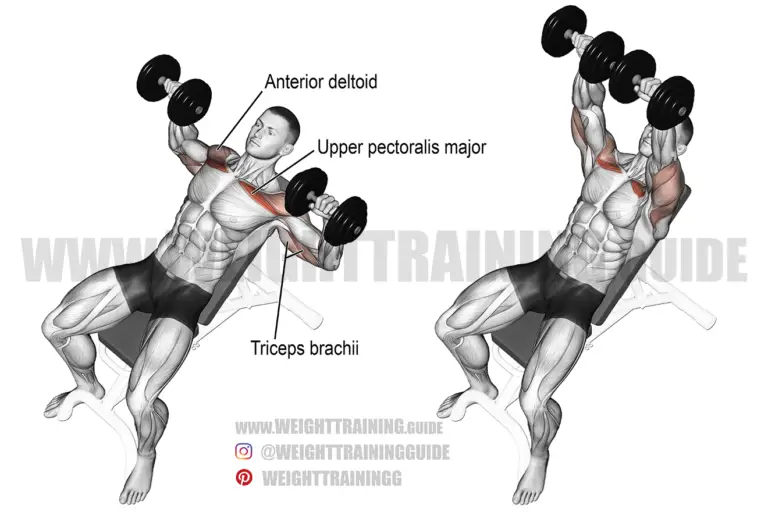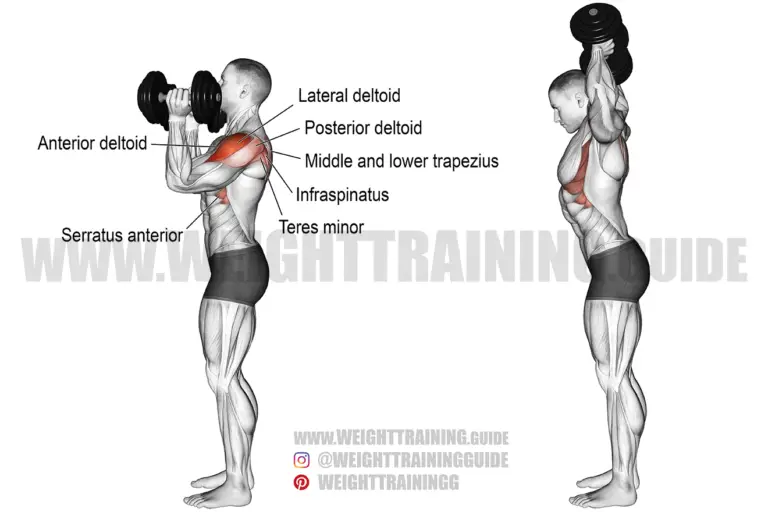Reverse-grip dumbbell bench press
Exercise details
- Target muscle: Upper Pectoralis
- Major Synergists: Lower Pectoralis Major, Anterior Deltoid, Triceps Brachii
- Dynamic stabilizer: Biceps Brachii (short head only)
- Mechanics: Compound
- Force: Push
Starting position
- Lie supine (on your back) on a flat bench, gripping a dumbbell in each hand using a supinated or reverse (palms up) grip. If full supination is uncomfortable, you may keep your wrists supinated at a 45 degree angle.
- Position the dumbbells at the sides of your chest.
Execution
- Keeping your wrists supinated, exhale as you press the dumbbells upward and inward until your elbows are almost fully extended. If you started with your wrists supinated to only 45 degrees, you can supinate your wrists more as you press up the dumbbells.
- Hold for a count of two and squeeze your chest.
- Inhale as you lower the dumbbells back to the starting position.
- Repeat for the desired number of prescriptions.
Comments and tips
- According to one study, performing the flat bench press with a reversed grip increases activation of the upper (clavicular) pectoral muscles. Please note, however, that the reverse-grip dumbbell bench press has been studied less than the traditional bench press.
- You may use the reverse-grip dumbbell bench press as an alternative to the typical bench press if you are experiencing shoulder pain or are recovering from an injury.
- You may also perform this exercise one arm at a time if you are looking to develop unilateral upper body strength.
- See also the wide reverse-grip barbell bench press and the incline reverse-grip dumbbell bench press.
Reverse-grip dumbbell bench press video
In the second video, Dr Jim Stoppani, Senior Science Editor of Muscle & Fitness magazine, explains that a reverse grip on a flat bench press increases activation of the upper pectoralis major more than performing the bench press on an inclined bench.

